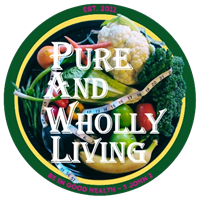Many of our friends and family members have been duped to believe that artificial sweeteners like Splenda® are saviors to prevent diabetes and obesity. However, nothing is further from the truth. The health risks associated with the ingredients in Splenda, or sucralose, are extensive and downright scary. As research continues to investigate the details, more negative effects are surfacing!
Sucralose is one of the top artificial sweeteners that’s used globally in reduced-calorie and diet foods and beverages. Although it’s marketed as a better alternative for your figure, the health profile for sucralose has raised concerns among researchers.
What Is Sucralose?
Sucralose is a chlorinated sucrose derivative. This means it’s derived from sugar and contains chlorine. Making sucralose is a multistep process that involves replacing the three hydrogen-oxygen groups of sugar with chlorine atoms. The replacement with chlorine atoms intensifies the sweetness of sucralose.
The most common sucralose-based product on the market today is Splenda. It is one of the most popular sweeteners in the U.S. That’s probably because it’s about 600 times sweeter than sugar. Across the globe, the range of product utilization for sucralose is more extensive than for any other artificial sweeteners.
Why is sucralose so popular for use in our foods and drinks? It’s readily soluble in ethanol, methanol and water. That means it can be used in both fat- and water-based products, including alcoholic drinks. Other artificial sweeteners, like aspartame and sodium saccharin, aren’t as soluble. Therefore they have more limited product applications.
Sucralose Side Effects and Dangers: May Cause Diabetes
A study published in the journal Diabetes Care discovered that if you consume Splenda, the risk of developing diabetes is profound. According to the study, daily consumption of diet soda was associated with a 36 percent greater risk of metabolic syndrome and a 67 percent greater risk of type 2 diabetes. That means sucralose is among the unexpected diabetes triggers.
Researchers evaluated this phenomenon for the first time with human subjects. Seventeen obese individuals who were insulin-sensitive took oral glucose tolerance tests after consuming either sucralose or water.
In addition to revealing that there was an “increase in peak plasma glucose concentrations” after consuming sucralose, it was discovered that there was a 23 percent decrease in insulin sensitivity, which prevents glucose absorption in cells.
Final Thoughts
- Sucralose is a chlorinated sucrose derivative that’s used as a sugar substitute because it contains no calories.
- The most common sucralose-based product on the market today is Splenda, which is one of the most popular sweeteners in the U.S. Splenda is about 600 times sweeter than sugar.
- Besides packets of Splenda, sucralose is used in a slew of foods and beverages, including diet sodas and other carbonated beverages, iced teas, ice cream, ice-pops, yogurts, baked goods, chewing gum, candies, and protein bars.
- Recent research indicates that consuming sucralose has a number of dangerous side effects, including its ability to:
- Cause diabetes
- Increase your risk of IBS and Crohn’s disease
- Cause leaky gut
- Generate toxic and cancerous compounds when heated
- Make you gain weight
Adapted from Dr. Axe
